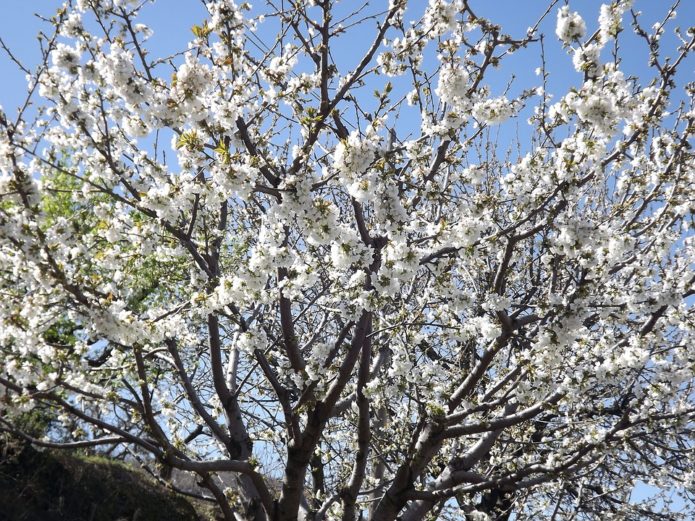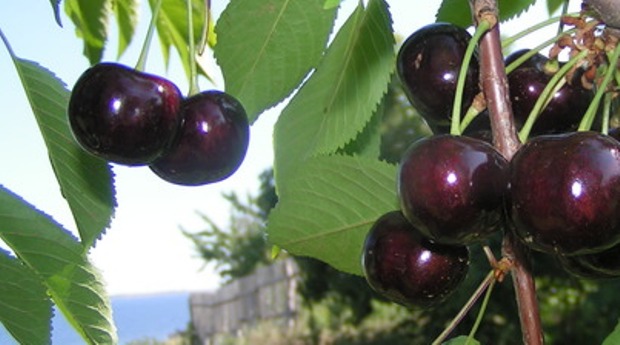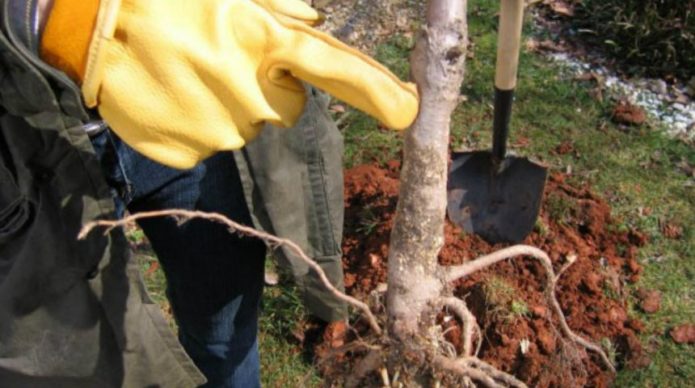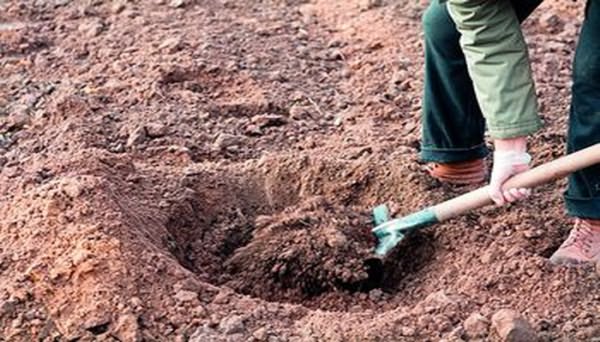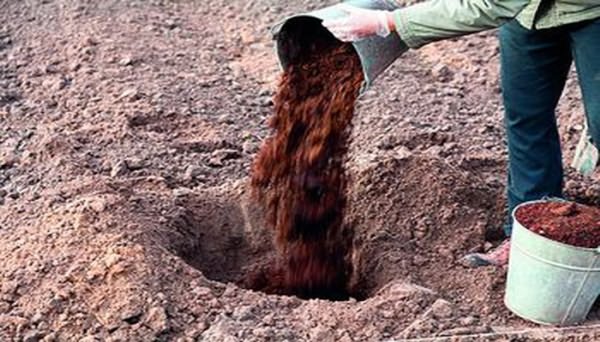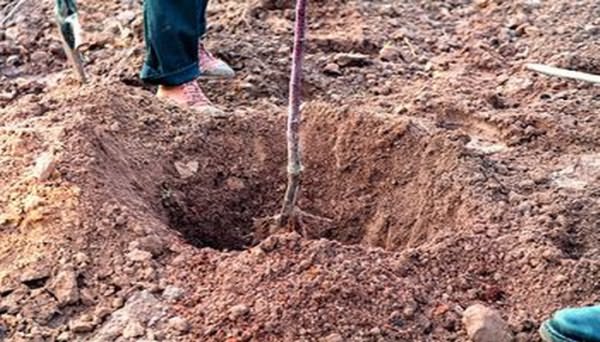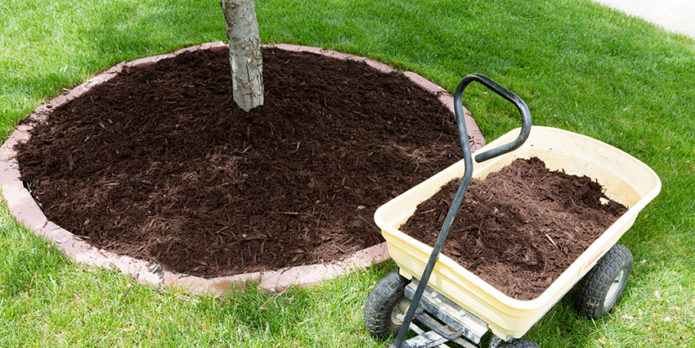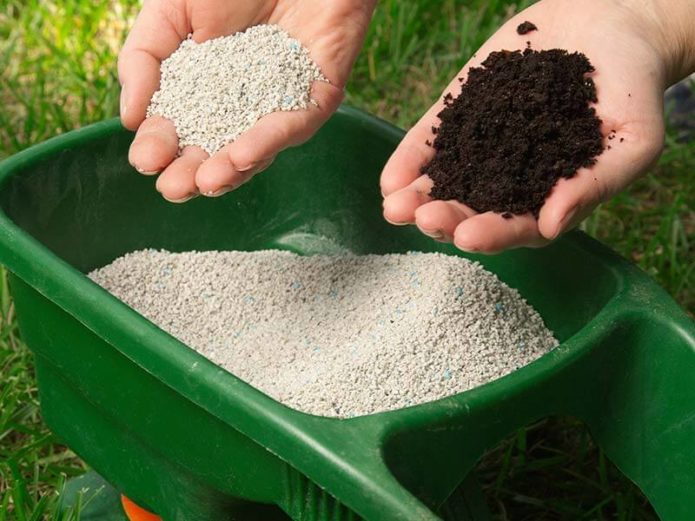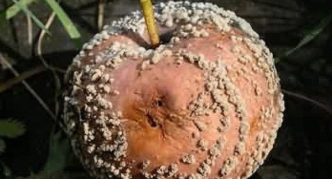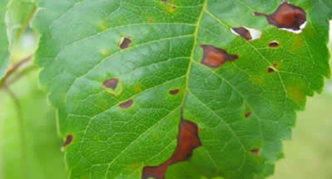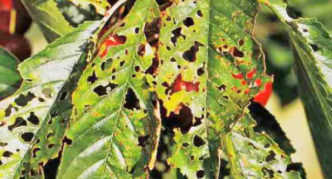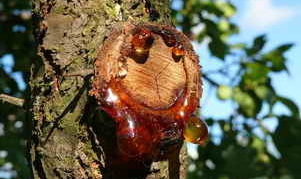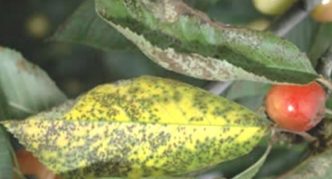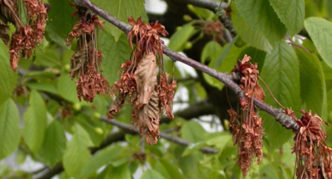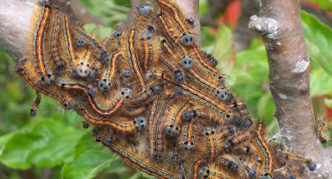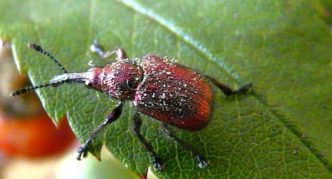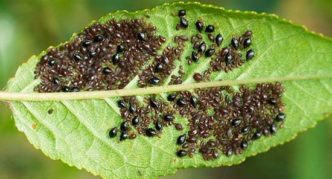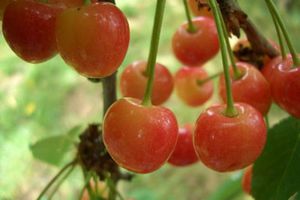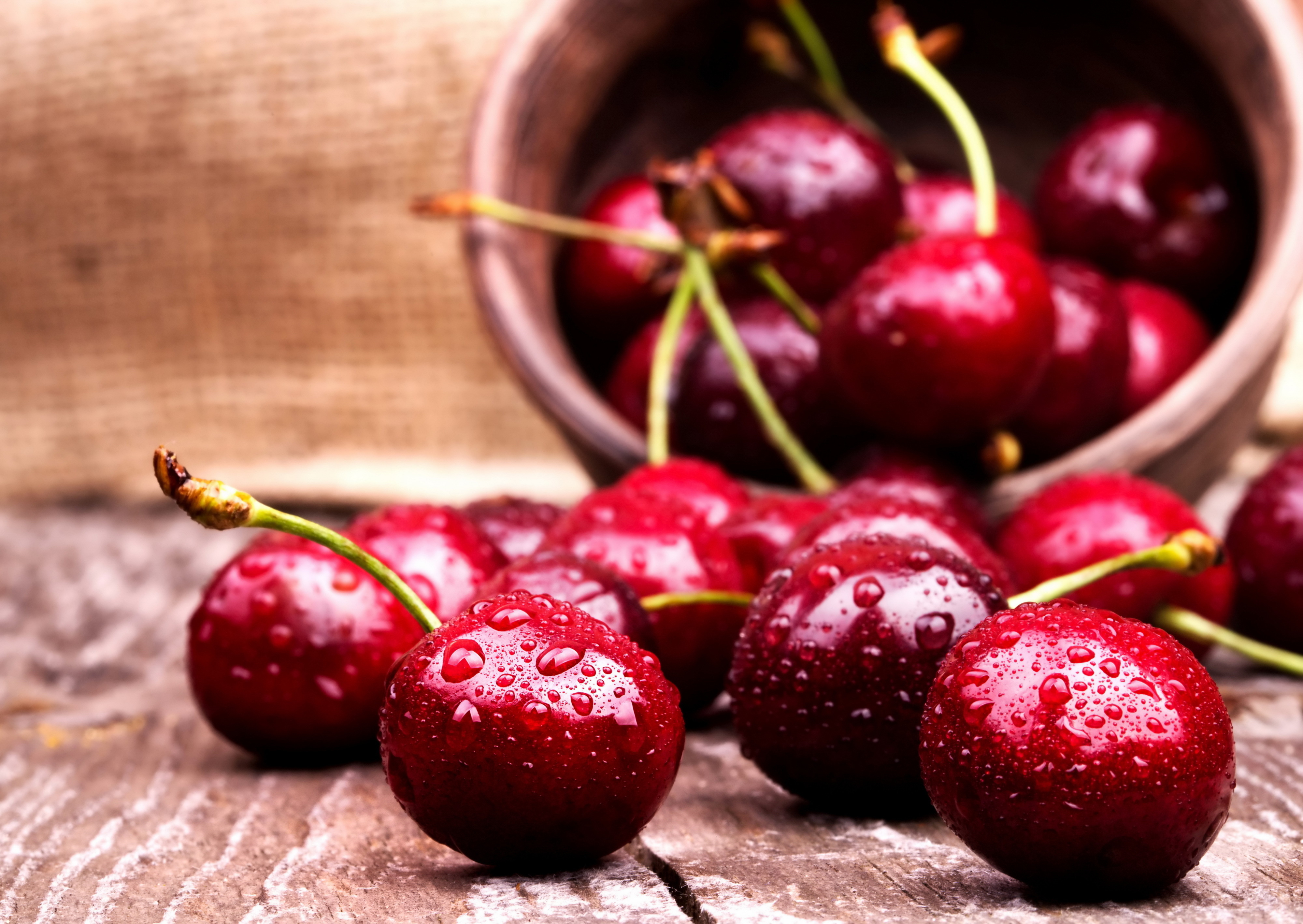Dybera black is an old proven variety that was obtained in the second half of the 19th century. For more than 150 years, it has been popular among gardeners, since large, sweet and juicy fruits with a pleasant sourness do not leave anyone indifferent.
Content
The history of the appearance of the variety
Dyber black arose in 1862 as a result of accidental pollination. The homeland of the variety is considered to be Gurzuf (Crimea). It was first described by the gardener A. Dyber, after whom the variety got its name. In the State Register of Dyber, black was included in 1947 and zoned for the North Caucasus and Lower Volga regions.
Characteristics of Dyber black
The cherry tree of the Dyber black variety has a rather impressive size - adult specimens reach 5-6 m in height. The crown is wide oval. Cherry leafiness is large. The leaf blades are elongated-oval with an elongated pointed tip. Shoots are straight, greenish-brown bark. Each inflorescence consists of 2-3 buds. Large and very beautiful flowers have unusual corrugated petals.
This cherry is not fast-growing. Unlike modern varieties, which bear fruit in the year of planting, the seedlings of Dyber black will begin to bear first fruits only in the fifth year. However, in its yield, Dyber black surpasses many varieties of sweet cherries. Under favorable climatic conditions, about 90 kg of ripe berries can be harvested from one specimen. There are also record-breaking trees from which up to 170 kg of cherries are harvested.
Table: distinctive features of the fruits of Dybera black
| Criteria | Indicators |
| Weight | Large fruits with an average weight of 6 g |
| The form | Rounded wide heart |
| Abdominal suture | Wide, shallow |
| Peduncle | Wide, thick |
| Fruit color | Dark red, almost black, shiny |
| Pulp | Dark red with light veins, dense, medium juiciness |
| Taste | Sweet with mild sourness |
| Bone | Round, medium size, does not come off |
Dyber black berries reach maturity in late June and early July.
Table: advantages and disadvantages of the variety
| pros | Minuses |
| High yield | Self-infertility (pollinators are required on the site) |
| Large and sweet berries | |
| The versatility of berries | Poor disease resistance |
Landing features
Like any other fruit tree, sweet cherry has its own planting nuances.You should prepare for this procedure in advance: choose a high-quality and healthy seedling, find the right place and form the soil. These events will determine not only the growth of the tree, but also the future harvests of large and sweet berries.
The best time to plant cherries
It is recommended to plant cherries only in spring, when the threat of return frosts has passed. Otherwise, the fragile seedling will simply freeze. If you bought a cherry in the fall, then dig in it and postpone planting until the warm spring days.
Soil preparation
To obtain an excellent harvest of black Dyber cherries, you need to fertilize the soil before planting, and also fill the planting pit with a nutrient composition. In the fall, dig up the area and add humus, potassium salt and superphosphate to the soil. The dosage of minerals is selected based on the recommendations of the fertilizer manufacturer, which are indicated on the packaging for the preparation.
Choosing a quality seedling
Despite the fact that it is recommended to plant cherries only in spring, experienced gardeners are advised to purchase planting material in the fall. During this period, seedlings are dug from the plots, and there is a high probability of acquiring the best specimen. Please Note Before Purchasing:
- the size of the cherry: the height of a one-year-old seedling should be 70–80 cm, and for a two-year old - 1 m;
- the vaccination site, which must be dry, without visible damage;
- the bark of the seedling, which should be evenly colored, without cracks.
After purchasing, dig the cherries into a small groove. The snow should completely cover the seedling. In this state, the tree will perfectly survive until spring and will quickly take root after landing in a permanent place.
The process of planting a cherry seedling
The cherry planting process consists of the following steps:
- We dig a hole 60x60 cm in size.
- Mix the rotted manure (2 buckets) with a fertile layer of earth, add 100 g of potassium sulfate and 400 g of superphosphate to the substrate and pour the nutrient mixture into the pit.
- We put a layer of ordinary soil on top to avoid contact between the roots and fertilizer.
- We soak the seedlings in water for 12 hours.
- We make a chatterbox out of clay, mullein and water and dip the roots into this mass.
- At the bottom of the landing hole, we make a small tubercle and drive in a peg.
- We straighten the roots and place the seedling on the tubercle.
- Sprinkle with earth so that the root collar is above the soil level.
- We tamp the soil and tie the stem to the peg.
- We make a roller around the seedling, forming a hole, and pour 2 buckets of water into it.
- We mulch the soil with peat, sawdust or dry soil.
Scheme for laying a cherry orchard
When planting cherry seedlings, it is very important to consider the size of an adult tree. The black dyber grows up to 6-7 m in height, so the distance between trees in a row should be at least 3 m, and the spacing should be left 5 m wide. It is most convenient to plant crops in a checkerboard pattern and have several varieties that will pollinate each other. The best pollinating varieties of Dyber black:
- Bigarro Gaucher,
- Gedelfinger,
- Zhabule,
- Ramon Oliva,
- Francis,
- Gold,
- Black Eagle.
Agrotechnology for growing black Dyber cherries
Sweet cherry is an unpretentious plant. If you plant it according to all the rules, then minimal care will be required. The tree will need regular watering during dry times, 3 additional fertilizing per season and annual pruning.
Watering and feeding
Additional moisturizing cherries are required only in dry periods and too hot days. At this time, 2 buckets of water are poured into the trunk circle once a week.
Adult cherries need regular feeding. Without them, the fruits of Dyber black become less juicy and sweet.The first top dressing is carried out in April, bringing urea (200 g per 1 tree) under the digging of the trunk circle.
The second feeding is done after fruiting - in late July and early August. During this period, 100 g of potassium sulfate and 300 g of superphosphate are scattered around the crown perimeter.
In the fall, make the last dressing. 2 buckets of humus are poured under each tree, mixed with the ground and watered abundantly.
Pruning and shaping the crown of a tree
The black dyber is a tall tree, so it is necessary to adjust its size by cutting and shaping the crown. Experienced gardeners advise pruning cherries in the spring. During this period, the skeletal branches are shortened, forming a tree in two tiers. In the first, 7-9 branches are left, and in the second - 2-3 branches. To prevent the tree from stretching upward, the central conductor of an adult specimen should be shortened to a height of 3–3.5 m. Also, in the spring, all damaged or frozen branches are cut off.
To increase the yield of cherries, it is recommended to remove all branches growing vertically and shoots that extend at an acute angle from the stem.
When pruning branches with a diameter of more than 1 cm, it is imperative to cover the cuts with garden pitch.
Protection of cherries from severe frost
In the fall, after the end of leaf fall, it is necessary to carry out water-charging irrigation, whitewash the stems, and wrap the young specimens with spruce branches. In order for the cherry to successfully endure sudden temperature changes and severe frosts, you need to trample the snow around the tree and sprinkle sawdust or peat on the resulting crust.
Diseases and pests
Unfortunately, Dybera black cannot boast of good immunity to various ailments and pests. This is the variety's biggest drawback.
Table: diseases of Dybera black
| Disease | Signs | Ways to fight |
| Hole spot (clasterosporium disease) |
|
. |
| Brown spot (phyllosticosis) |
|
|
| Fruit rot |
|
|
| Gum therapy |
|
|
| Scab |
|
|
| Monilial burn | Leaves, ovaries and young twigs dry up unexpectedly. |
|
Photo gallery: the main diseases of sweet cherry
- Fruit rot damages sweet cherry berries, on which growths appear in concentric circles
- When infected with brown spot, round spots appear on the leaves with necrotic attacks
- When a tree is damaged by a perforated spot, the tissues on the damaged leaves die off, and holes appear
- Gum removal leads to shrinkage of shoots
- Bright yellow spots on the leaves are the main sign of scab.
- With a monilial burn, leaves, ovaries and young branches dry out
Table: insects harmful to the black Dyber cherry variety
| Pest | Signs | Ways to fight |
| Cherry Slime Sawfly | The insect lays the larvae, which eat away the pulp of the leaves, leaving only veins from them. | Treat cherries with insecticides, such as Iskra-M, Decis or Karate. |
| Cherry fly | The berries become soft, dark, rot and crumble. |
|
| Ringed silkworm |
|
|
| Cherry aphid | Massive clusters of small black insects appear on young shoots and leaves. | Spray the tree with a solution of Inta-Vir or Decis immediately after the pest appears. |
| Weevil | The insect eats away the buds, buds and ovaries, and the larvae deposited in the seeds damage the berries. | After flowering, spray the cherries with Actellik. |
Photo gallery: the main pests of sweet cherry
- The larvae of the cherry slimy sawfly eat away the pulp of the leaves, leaving only the veins of them
- The caterpillars of the ringed silkworm eat young leaves and buds
- Cherry fly larvae feed on cherry pulp
- Weevil eats buds, buds and ovaries
- Massive clusters of cherry aphids are impossible not to notice
Video: how to grow beautiful and tasty cherries
Gardeners reviews
My Dyber black grows alone in the corner of the garden, without manual pollination it almost does not bear fruit. In this regard, on your site, it is highly desirable to create a small cherry garden, ideally, 5-6 varieties. Then there will be no problems with manual pollination. Something will freeze in winter, something will be devoured by a deer fly, something will be too early or late, something is only suitable for jam and compotes.
The variety is very good, but not everyone can correctly, (on time), process medium late varieties from cherry fly. And the fly is the worst enemy, medium-late and late varieties.
Dybera black is a proven cherry variety that has proven itself well when grown in the southern regions of Russia, but the most abundant harvest is obtained in the Crimea - about 170 kg per tree. Even if an amateur gardener cannot achieve record yields, he is able to get 70-80 kg from one mature tree, which will also be an excellent result. In addition, dark and large berries have a very pleasant taste, and they make excellent compotes, preserves and jams.
